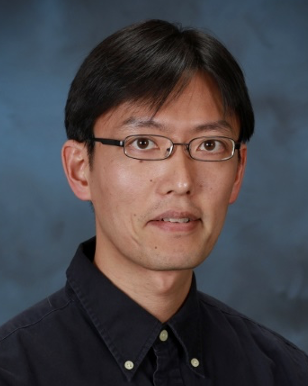Fall 2023 Seminar Series
Seminars are Wednesdays at 4:00 p.m. in the Larrañaga Engineering Auditorium, Centennial Engineering Center, and are sponsored by CBE, BME, and NSME. Topical seminars are scheduled throughout the semester and can be used for seminar credit.

December 6, 2023
Shimadzu Scientific Instruments, Environmental Analyses & Employment Opportunities
Wade McGregor, Field Sales Engineer
4:00 p.m., Larrañaga Engineering Auditorium, Centennial Engineering Center
Abstract: Shimadzu Scientific Instruments (SSI) provides tools for chemical analyses of all forms of matter. Wade’s talk will survey his unique career trajectory and various scientific industries he’s served, such as: environmental, pharmaceutics, forensics, semiconductor, and materials characterization. The body of the talk will describe how aqueous compounds can be resolved by High Performance Liquid Chromatography (HPLC) and subsequently identified and quantified by Mass Spectrometry (LCMS). A timely LCMS application will be highlighted, quantifying Per- and Polyfluoroalkylated Substances (PFAS, also known as “forever chemicals,”) found in the environment.
Bio: Wade McGregor earned a PhD, in Biochemistry, at Utah State University, in 2005 and held several academic positions for the subsequent 8 years. His research focused on structural and functional characterization of an enzyme (ArgE) involved in arginine biosynthesis, in prokaryotes, but not eukaryotes. Hence, it has potential to serve as a novel target for antimicrobial agents. Wade took a professional turn and has now been selling scientific instruments for 9 years. He works from a home office in Queen Creek, AZ and serves scientists and engineers throughout AZ & NM, with natural affinity for academics.
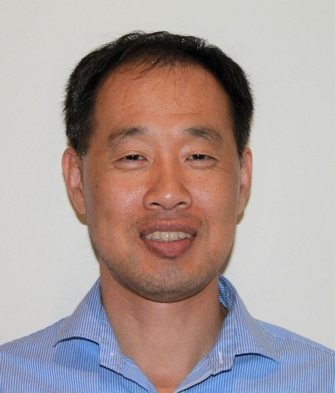
November 29, 2023
High-temperature polymer electrolytes materials for fuel cells and electrolyzers
Yu Seung Kim , Los Alamos National Laboratory
4:00 p.m., Larrañaga Engineering Auditorium, Centennial Engineering Center
Abstract: Current high-temperature proton exchange membrane fuel cells (HT-PEMFCs) based on phosphoric acid doped polybenzimidazole show limited stability under dynamic operating conditions. Los Alamos National Laboratory has developed ion-pair HT-PEMFCs that exhibit improved performance and durability.1-5 In this talk, I will present the history of ion-pair HTPEMFCs, membrane & ionomer development, progression of performance and durability and some fundamental understanding of phosphoric acid retention.
Bio: Dr. Yu Seung Kim is a staff scientist at Los Alamos National Laboratory. He received his B.S. degree from Korea University in 1994 and his Ph.D. from Korea Advanced Institute of Science and Technology in 1999. After three and a half years as a post-doctoral fellow at the Chemistry Department of Virginia Tech, he moved to Los Alamos in 2003 and conducted research. Dr. Kim is an expert in fuel cells and electrolyzers. His research interests include polymeric materials for membranes and electrolytes used in electrochemical devices. In 2016, He received a US DOE Hydrogen and Fuel Cells Award in recognition of his outstanding contributions to alkaline membrane fuel cell R&D. He was awarded 2022 Inventor of the Year from Battelle Research Institute for his work on ion-pair high-temperature proton exchange membrane fuel cells. Recently, he received the Fellow’s Prize for Research from Los Alamos National Laboratory for his contribution to polymer membranes over the last 10 years of research.
November 22, 2023
Journey through Micropore Engineering in Molecular Sieves: Synthesis to Application
Jong Hun Kang, Seoul National University (SNU), Korea
4:00 p.m., on Zoom
https://unm.zoom.us/j/95765130206
Abstract: Molecular sieves, particularly zeolites, have assumed a pivotal role in contemporary chemical engineering due to their indispensable utility as a prominent category of heterogeneous catalysts. These materials possess well-defined micropore structures at the molecular scale, making them capable of influencing the reaction pathways of surface reactions. This presentation on molecular sieves will be divided into two main sections: synthesis and reaction. The first part will delve into synthetic approaches for preparing various novel frameworks, achieved through a combination of traditional hydrothermal synthesis and postsynthetic topotactic transformations. Several newly developed molecular sieves, including germanosilicates CIT-13, CIT-14, CIT-15, and chiral STW will be introduced. Furthermore, various interzeolite transitions will be discussed, examining them from the perspectives of related physical chemistry and crystallography. In the second part of the presentation, the intricate relationship between the structural properties of zeolites and their catalytic properties will be explored. This section will include an introduction to the cage-defining ring theory, which serves as a theory for understanding shape selectivity in the methanol-to-olefin (MTO) reaction. Subsequently, I will shift my focus to the deactivation behaviors of zeolites under highly carbothermal environments, such as shale-gas dehydroaromatization reaction. The crucial role of the distribution of acid sites within zeolites, which can mitigate the formation of external hard coke will be elucidated, which leads to improved catalytic stability and regenerability in this reaction.
Bio: Jong Hun Kang is an Assistant Professor in the School of Chemical and Biological Engineering at Seoul National University (SNU), Korea. He earned his Ph.D. in 2019 from California Institute of Technology, where he was under the supervision of Prof. Mark E. Davis. Subsequently, he pursued his postdoctoral research at Massachusetts Institute of Technology, working with Prof. Yuriy Román. Since 2020, he has been leading his own research group at SNU. His expertise lies in the synthesis and application of various zeolites. His research is primarily focused on the development of structure-property-reactivity relations of zeolites in various catalytic applications, as well as the catalytic conversion of C1 feedstocks or plastic waste materials into valuable chemicals such as gas, liquid, olefins, BTX, etc.
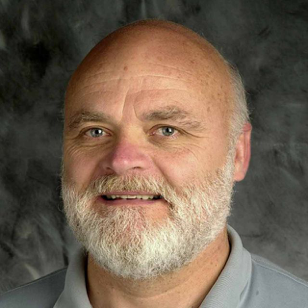
November 15, 2023
Nature’s Consumer Materials: High Performance but Sustainable
Herbert Waite, University of California Santa Barbara
4:00 p.m., Larrañaga Engineering Auditorium, Centennial Engineering Center
Abstract: Like humans, many living organisms depend on non-living polymeric materials to provide shelter, enhance security, procure food, and store perishables. These materials have sophisticated adaptively-tuned mechanical properties yet are ultimately disposable. Unlike most disposable man-made materials, however, many natural consumer materials contain built-in obsolescence devices based on redox poise. Once redox poise drops below a certain level, function ends and the materials become prone to environmental degradation. My lecture will dissect two of these in consumer materials made by the common mussel, Mytilus.
Bio: Name: Herbert Waite
Austrian born (Vienna)
Family moved to US at age 7
Grew up on the New Jersey shore (Barnegat Bay)
Undergraduate degree: A.B. Harvard University 1971 (Zoology)
Graduate degree: PhD Duke University 1976 (Biochemistry)
Post-doc: August Krogh Institute, University of Copenhagen
Previous faculty appointments in biochemistry: University of Connecticut & University of Delaware
Present Appointment: Professor of Biochemistry, University of California Santa Barbara (since 1999)
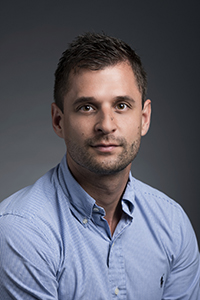
November 1, 2023
Rational design of vaccines using DNA origami
Remi Veneziano, George Mason University
4:00 p.m., Larrañaga Engineering Auditorium, Centennial Engineering Center
Abstract: DNA origami nanoparticles (DNA-NPs) have enabled synthesis of biomimetic nanoarchitectures that mimic natural protein assemblies such as toxins and viruses with unprecedented structural fidelity. Unlike any other types of synthetic self-assembled NPs, DNA origami can be designed to any prescribed shape and size in the 10 to 100 nanometer scale and can serve as scaffold to organize biomolecules with exquisite control over their stoichiometry, spatial organization, and orientation. In addition, these DNA-NPs allow multiplexing of several organic and inorganic molecules on the same NPs to enhance stability and provide tracking capabilities. While these biomimetic nanoarchitectures represent a great potential for several biomedical applications, there is a critical need for development of robust synthesis methods that would allow expansion of their utilization. In this talk, I will present the strategy we developed to create a DNA-NP-based platform that can display various nanoscale organizations of antigens in order to assess the specific structural features of antigen presentation required to trigger strong immune cell activation. The efficiency of our strategy is demonstrated with two examples of vaccine platforms we have developed against HIV and SARS-CoV-2. Our results highlight the potential of DNA-NPs to probe the role of viral antigen nanopatterning on immune cell activation and the efficacy of our approach to help inform the design of a novel efficient and safe vaccine strategies against several infectious diseases.
Bio: Remi Veneziano joined the department of Bioengineering at George Mason University in the Fall of 2018 with the objective of developing a highly translational-research program focusing on using DNA nanotechnology for biomedical applications. These applications include targeted delivery of biologics (RNA, proteins), vaccine platform development, biophysical characterization of DNA nanoparticles interaction with lipid bilayer membranes, and synthesis of new composite biomaterials for cancer immunotherapy. Prior to this position, he was a Postdoctoral Associate at MIT under the supervision of Pr. Mark Bathe, where he worked on various aspect of DNA nanotechnology including the development of a new type of 3D wireframe DNA nanoparticles for biomedical applications.

October 25, 2023
Conflict of Interest in Research
Linnea Ista, UNM Office of Research Integrity and Compliance
4:00 p.m., Larrañaga Engineering Auditorium, Centennial Engineering Center
Abstract: The Office of Research Integrity and Compliance (ORIC) is here to help you identify, report, and manage Conflicts of Interest in Research.
COI in research may occur when an investigator's private interests (such as outside professional or financial relationships) compete with their ability to objectively design, conduct, or report research.
Research COIs are increasingly part of conducting research and do not suggest any impropriety on the part of the research investigator. Most conflicts can be successfully resolved without impeding research activities. A COI may exist despite the investigator's adherence to the highest standards of conduct.
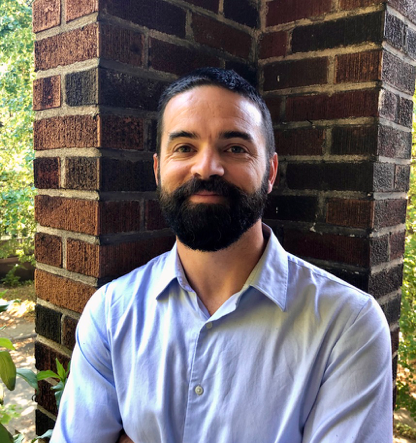
October 18, 2023
Bio-inspired materials processing: Time-tested tricks for sustainably fabricating advanced materials
Matthew J. Harrington, Dept. of Chemistry, McGill University, Montreal, Quebec, Canada
4:00 p.m., on Zoom
https://unm.zoom.us/j/95765130206
Meeting ID: 957 6513 0206
Passcode: seminar23
Abstract: Nature provides an important role model for inspiring sustainable production of high-performance polymeric materials. For example, mussels rapidly fabricate hierarchically structured biopolymeric fibers known as byssal threads, which have emerged as an important source of bio-inspiration due to their remarkable material properties (e.g., high toughness, self-healing, wet adhesion). Understanding the physical and chemical principles underlying byssal thread production may inspire greener materials fabrication in the future; however, currently, these design principles must first be elucidated.
Byssal threads are produced via bottom-up self-assembly of over 15 different protein building blocks, which localize in specific regions of the fiber with nanoscale precision. The threads themselves consist of different functional regions including an underwater glue, a self-healing fiber, an abrasion-resistant flexible coating, and a quick-release biointerface. Our group has harnessed advanced material characterization techniques, including confocal Raman spectroscopy, X-ray fluorescence microscopy and focused ion beam scanning electron microscopy (FIB-SEM), coupled with traditional biochemical approaches to investigate the fabrication of these different components. We have discovered that mussels employ secretory vesicles filled with condensed fluid protein phases (e.g., coacervates, liquid crystals) as precursors for byssus assembly. These dynamic fluid phases enable the pre-organization of protein building blocks, which respond to specific chemical and physical triggers (pH, redox potential, ion content, mechanical shear) to initiate the “fluid-to-solid” transformation. In the adhesive, protein condensates are secreted into a network of channels resembling a microfluidic device, where they undergo liquid-liquid phase separation (LLPS) and are simultaneously cross-linked via coordination complexation with co-secreted metal ions (Fe and V). Extracted design principles hold direct relevance for inspiring production of advanced polymeric materials and adhesives
Bio: Matthew Harrington is Associate Professor and Canada Research Chair Tier 2 in Green Chemistry in the Department of Chemistry at McGill University, as well as co-director of the McGill Institute of Advanced Materials (MIAM). He received his Ph.D. in 2008 from the University of California, Santa Barbara in the lab of J. Herbert Waite. This was followed by a Humboldt postdoctoral fellowship at the Max Planck Institute of Colloids and Interfaces in the Department of Biomaterials, where he was later a research group leader from 2010 until 2017. His research is focused on understanding biochemical structure–property relationships in the function and formation of biological materials and applying extracted design principles for the development and sustainable production of bio-inspired materials.

October 11, 2023
In Silico Modeling of PICK1 Protein Dynamics and Interactions: Pathway to Peptidebased Therapies for Substance Use Disorders
Yi He, UNM Department of Chemistry and Chemical Biology
4:00 p.m., Larrañaga Engineering Auditorium, Centennial Engineering Center
Abstract: Substance use disorder, a persistent societal problem not only in New Mexico but also on a wider global scale, may find a hopeful resolution in the novel scaffolding protein known as Protein Interacting with C Kinase-1 (PICK1). PICK1 plays a significant role in the realm of drug addiction, as suggested by experimental evidence that interference with PICK1-DAT (Dopamine Transporter) interactions can attenuate the behavioral effects of cocaine in animal models. While we have made considerable progress in understanding PICK1's role in addiction, developing a drug that can effectively inhibit PICK1 remains a daunting task. This is primarily due to the protein's dynamic nature and complex structural characteristics. Our research team employs a diverse array of computational tools to delve deeper into the key residues and physical interactions that govern PICK1's structural, dynamic, and mechanical properties, all of which are highly relevant to its biological function. Acquiring such comprehensive information will enable us to design synthetic peptides that specifically target PICK1. These peptides, in turn, hold the potential to form the foundation of innovative treatments for substance use disorders.
Bio: Dr. Yi He is an Assistant Professor in the Department of Chemistry and Chemical Biology at The University of New Mexico (UNM) and holds an adjunct position in the Department of Internal Medicine at UNM's Health Sciences Center. A Ph.D. graduate in Biophysics from Huazhong University of Science and Technology, he developed his research career under Prof. Harold Scheraga at Cornell University and Prof. Victor Munoz at the University of California, Merced. Dr. He has received numerous grants, including the NSF LEAPS, NSF PREC, NSF CAREER Award, and the INBRE RAIN Award. He actively contributes to the scientific community, having co-chaired the ACS Rocky Mountain Regional Meeting and served as a guest editor for several journals and topics. His significant research contributions encompass studies on protein structures and dynamics, with a recent expansion into AApeptide design. Beyond his research, he promotes education through Virtual Reality workshops, enhancing chemistry education for students.
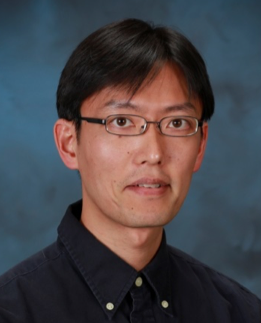
October 4, 2023
Toward Closed-loop Circularity of Plastics by Chemical Upcycling
Tomonori Saito, The Bredesen Center for Interdisciplinary Research and Graduate Education, University of Tennessee Knoxville
4:00 p.m., Larrañaga Engineering Auditorium, Centennial Engineering Center
Abstract: Over 400 million tons of solid plastics are globally produced annually and only ~9% of those are currently recycled in U.S.. To establish closed-loop circularity of plastics, our team has focused on upcycling commodity plastics, designing polymers with circularity, establishing low-carbon circular manufacturing, and deconstructing/reconstructing engineering plastics with exceptional efficiency. One of our approaches to enable polymer circularity is to create novel vitrimers, new recyclable and reprocessable crosslinked polymers by the presence of dynamic exchangeable groups. In our study, we upcycled commodity thermoplastic elastomers to exceptionally tough adhesives, that widely exceed the adhesion of commercial adhesives (Sci. Adv. 2021; 7 : eabk2451). We also focused on developing robust vitrimer resins for carbon fiber composite application, which enables facile reprocessability and multi-cycle recyclability (Cell Reports Physical Science 3, 101036, 2022). In another system, we have established closed-loop additive manufacturing of upcycled commodity plastics by upcycling acrylonitrile butadiene styrene (ABS) into a recyclable, robust adaptive ABS-vitrimer (re)printable via the most common additive manufacturing method, Fused Filament Fabrication (FFF) (Sci. Adv. 2022, 8, eabn6006). The full FFF-processing of ABS-vitrimer overcomes the major challenge of (re)printing crosslinked materials and produces stronger, tougher, solvent-resistant 3D objects directly reprintable and separatable from unsorted plastic waste. Furthermore, we have developed highly efficient organocatalysts that enable low-energy and greener depolymerization pathways for condensation polymers (Mater. Horiz., 2023, 10, 3360–3368). The high efficiency of the organocatalyst enables efficient deconstruction of diverse mixed plastics, addressing one of the major challenges in the field. Our finding opens a new paradigm of mixed plastic deconstruction and can transform plastic recycling toward establishing closed-loop circularity. This presentation will discuss our on-going efforts on chemical upcycling of plastics in multiple DOE-funded projects (BES, EERE, LDRD).
Bio: Dr. Tomonori Saito is a senior R&D staff scientist at Oak Ridge National Laboratory (ORNL), and a joint faculty associate professor (graduate advisor) at the University of Tennessee, Knoxville. He is a synthetic polymer chemist (Ph.D. 2008 Virginia Tech), who has extensive experience in synthesis and various applications of well-defined polymers. He currently leads various polymer science projects at ORNL including polymer upcycling, vitrimer composites, self-healing materials, robotic gas pipeline renewal, building materials, polymer electrolytes for Li-ion batteries, fuel cells and flow batteries, and many others. He has published 127 peer-reviewed articles, had 13 issued patents, and won R&D 100 in 2012, 2016, 2019, 2021. He has received several awards including the most recent two ORNL’s awards on Research Accomplishment and Outstanding Scholarly Output, respectively as well as Battelle’s 2023 ORNL Inventor of the Year.
September 27, 2023
Conflict of Interest in Research
Kevin Leung, Sandia National Laboratories
4:00 p.m., Larrañaga Engineering Auditorium, Centennial Engineering Center
Abstract: Understanding electrochemical Interfaces is critical for energy storage. The study of dielectric properties is relevant not just to energy, but to geochemistry and micro/nano-fluidic applications. Experimental elucidation of the structures and functions at buried electrochemical interfaces. Atomic length-scale modeling often offers mechanistic insights complementary to measurements. This presentation first used electronic structure DFT calculations to explain the discharge mechanism and lower-than-expected effective discharge voltage/energy density of primary (so far non-rechargeable) graphite fluoride (CFx) batteries. This segues into studies of rechargeable lithium batteries, with far less voltage hysteresis, used in electric vehicles; we describe significant challenges and theoretical controversies remain in our understanding of the interfaces. Using the recently proposed “galvanic corrosion” studies of lithium metal anode as starting point, we compare corrosion in structural materials like aluminum with that in lithium metal anodes, and obtain interdisciplinary insights into battery self-discharge and finite shelf lives. Finally, dielectric responses should govern key predictors of electrochemical processors such as solvation-free energy. We use coarse-grained modeling and classical molecular dynamics simulations to distinguish the Debye-Huckel screening of ionic solutions from the dielectric screening of salt-free solvents. This paves the way to future conceptual advances in this area.
Sandia National Laboratories is a multimission laboratory managed and operated by National Technology and Engineering Solutions of Sandia, LLC, a wholly-owned subsidiary of Honeywell International, Inc., for the U.S. Department of Energy's National Nuclear Security Administration under contract DE-NA0003525. We acknowledge support from the U.S. DOE Office of Basic Energy Sciences, Division of Chemical Sciences, Geosciences, and Biosciences. Any subjective views or opinions that might be expressed in the document do not necessarily represent the views of the U.S. Department of Energy or the United States Government.
Bio: Kevin Leung received BA degrees in physics and chemistry from the University of Rochester, and a PhD in theoretical chemistry from the University of California at Berkeley. He has been at Sandia since 1997, and use electronic structure and other modeling techniques to study solid-liquid and solid-solid interfaces associated with batteries, geochemistry, corrosion, and other interdisciplinary research areas.

September 13, 2023
The Rise of Silicon Carbide Nanosheets
Sakineh Chabi, UNM Mechanical Engineering
4:00 p.m., Larrañaga Engineering Auditorium, Centennial Engineering Center
Abstract: Owing to its excellent thermal, electrical, and physical properties, silicon carbide (SiC) is a leading material for several strategic industries ranging from power electronics and high-temperature applications to quantum information and aerospace. Yet despite all these advantages, current SiC technologies are far from ideal, and new innovations are needed. In our research group, we are harnessing the latest advancements where nanoscience and semiconductor research converge to develop the next generation of silicon carbide technologies. We are developing two-dimensional silicon carbide (2D SiC) materials and devices. One of the most significant advantages of 2D SiC over any other 2D material is its predicted thermal capabilities, as silicon carbide can tolerate high temperatures and extreme environments. Further, due to its reduced thickness and quantum confinement, 2D SiC possesses a variety of exotic properties (e.g., direct bandgap, strong excitonic effects, enhanced photoluminescence, and various non-linear optical properties) that are absent in bulk SiC. These characteristics are critical for many applications and make 2D SiC a potential game-changer for future semiconductors.
In my talk, I will discuss our latest progress in the field of two-dimensional silicon carbide.
Bio: Dr. Sakineh Chabi is an Assistant Professor of Mechanical Engineering at the University of New Mexico. She received her PhD in Engineering from the University of Exeter in England in 2015. Before joining UNM, she was a postdoctoral researcher at Florida Tech (2015-2017) and Temple University (2017- 2018). Her current research focuses on silicon carbide semiconductors, renewable energy, and graphene technology. Dr. Chabi has received several external and internal awards, including the Air Force Office of Scientific Research (AFOSR) Young Investigator Research Program (YIP) award, AEPA-E, NASA EPSCoR, Women in STEM, RAC, GAP Funding, and SandiaUniversity partnership awards. She is also the founder and CEO of Silicon Carbide Nanosheets Technology LLC.
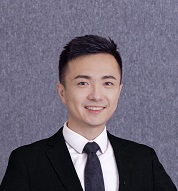
September 6, 2023
Exploring, understanding, and manipulating cation disordering in Li-ion battery electrode materials
Dongchang Chen
UNM Chemistry and Chemical Biology
4:00 p.m., Larrañaga Engineering Auditorium, Centennial Engineering Center
Abstract: Cation disordering, a fascinating phenomenon that represents random cation distribution in a long range, has brought about numerous novel materials for battery applications. As a key to the performance of a cation-disordered battery material, how the cations are arranged in a shorter range is an intriguing and critical question. In this talk, we will present our study in understanding the nature of cation disordering for a series of cation-disordered electrode materials via analyzing their vibrational structures. Owing to the unique working principle of vibrational spectroscopy, it generates critical information of cation arrangement and structural features, which cannot be feasibly obtained via diffraction analyses. Furthermore, the spectroscopic information allows us to locate a few hidden key factors that control the electrochemical performance and help us build models to better understand the role of these factors.
Bio: Dr. Dongchang Chen is an assistant professor in the Department of Chemistry and Chemical Biology at the University of New Mexico. He obtained his B.S. in Chemical Physics at the University of Science and Technology of China in 2011 and his Ph. D. at Georgia institution of technology in 2017. Prior to joining UNM in 2021, he worked as postdoctoral researcher at the Lawrence Berkeley National Lab. His research mainly focuses on understanding the underlying physicochemical chemical processes associated with electrochemical energy storage and conversion processes and using the obtained knowledge to design solid-state materials that feature unique electrochemical properties.
October 04, 2023
Toward Closed-loop Circularity of Plastics by Chemical Upcycling
Tomonori Saito
Senior R&D Staff, Cehmical Science Division, Oak Ridge National Laboratory
4:00 p.m., Larrañaga Engineering Auditorium, Centennial Engineering Center
Abstract: Over 400 million tons of solid plastics are globally produced annually and only ~9% of those are currently recycled in U.S.. To establish closed-loop circularity of plastics, our team has focused on upcycling commodity plastics, designing polymers with circularity, establishing low-carbon circular manufacturing, and deconstructing/reconstructing engineering plastics with exceptional efficiency. One of our approaches to enable polymer circularity is to create novel vitrimers, new recyclable and reprocessable crosslinked polymers by the presence of dynamic exchangeable groups. In our study, we upcycled commodity thermoplastic elastomers to exceptionally tough adhesives, that widely exceed the adhesion of commercial adhesives (Sci. Adv. 2021; 7 : eabk2451). We also focused on developing robust vitrimer resins for carbon fiber composite application, which enables facile reprocessability and multi-cycle recyclability (Cell Reports Physical Science 3, 101036, 2022). In another system, we have established closed-loop additive manufacturing of upcycled commodity plastics by upcycling acrylonitrile butadiene styrene (ABS) into a recyclable, robust adaptive ABS-vitrimer (re)printable via the most common additive manufacturing method, Fused Filament Fabrication (FFF) (Sci. Adv. 2022, 8, eabn6006). The full FFF-processing of ABS-vitrimer overcomes the major challenge of (re)printing crosslinked materials and produces stronger, tougher, solvent-resistant 3D objects directly reprintable and separatable from unsorted plastic waste. Furthermore, we have developed highly efficient organocatalysts that enable low-energy and greener depolymerization pathways for condensation polymers (Mater. Horiz., 2023, 10, 3360–3368). The high efficiency of the organocatalyst enables efficient deconstruction of diverse mixed plastics, addressing one of the major challenges in the field. Our finding opens a new paradigm of mixed plastic deconstruction and can transform plastic recycling toward establishing closed-loop circularity. This presentation will discuss our on-going efforts on chemical upcycling of plastics in multiple DOE-funded projects (BES, EERE, LDRD).
Bio: Dr. Tomonori Saito is a senior R&D staff scientist at Oak Ridge National Laboratory (ORNL), and a joint faculty associate professor (graduate advisor) at the University of Tennessee, Knoxville. He is a synthetic polymer chemist (Ph.D. 2008 Virginia Tech), who has extensive experience in synthesis and various applications of well-defined polymers. He currently leads various polymer science projects at ORNL including polymer upcycling, vitrimer composites, self-healing materials, robotic gas pipeline renewal, building materials, polymer electrolytes for Li-ion batteries, fuel cells and flow batteries, and many others. He has published 127 peer-reviewed articles, had 13 issued patents, and won R&D 100 in 2012, 2016, 2019, 2021. He has received several awards including the most recent two ORNL’s awards on Research Accomplishment and Outstanding Scholarly Output, respectively as well as Battelle’s 2023 ORNL Inventor of the Year.

